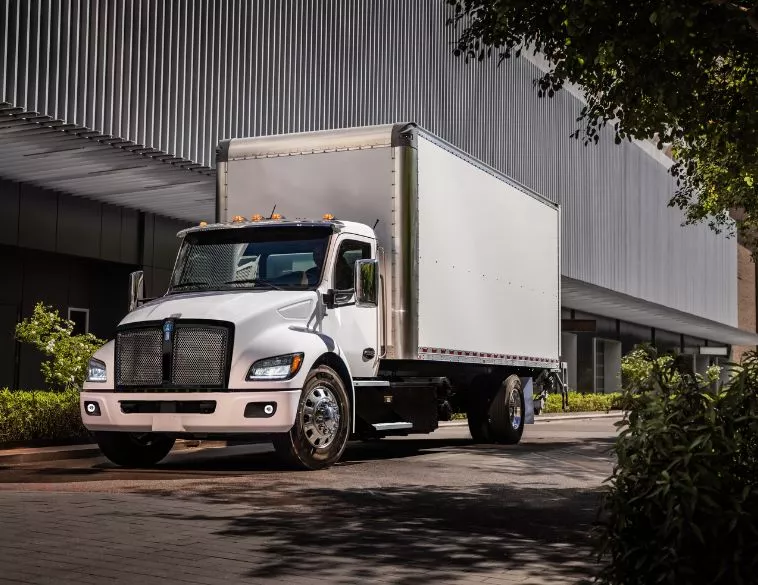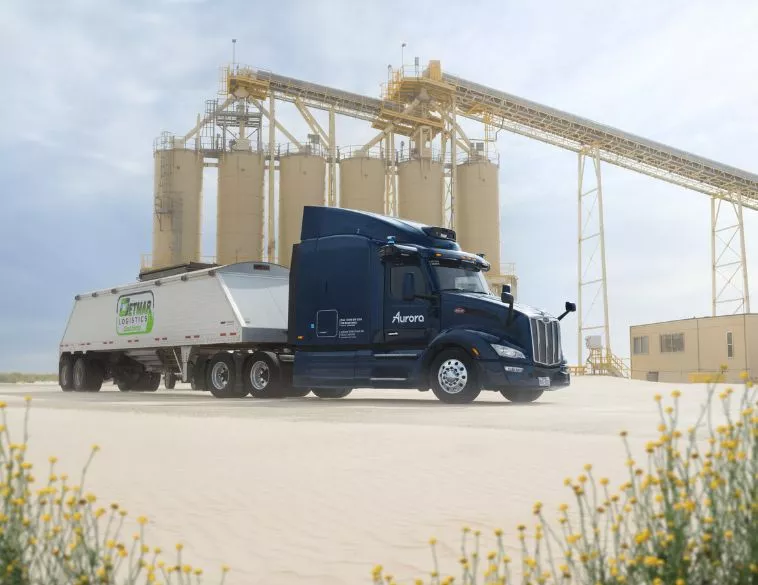Freightliner Introduces the 5th-Generation Cascadia in Canada


Last fall, American manufacturer Freightliner announced the introduction of the fifth generation of its Cascadia class 8 truck. This vehicle is now making its debut at Canadian dealerships.
The very first Canadian presentation of the new truck took place at ExpoCam in Montreal last February, in the presence of dealers and customers from across Canada.
The Cascadia 2026 will be available in Canada in the third quarter of the year. Training and demonstration models will arrive at dealerships at the beginning of the summer. Delivery times are currently estimated to be between eight and ten weeks.
The Freightliner Cascadia is the best-selling Class 8 truck in both Canada and the United States.
This evolution of a winning formula is available in a raised-roof sleeper cab version. The truck is also available in cab lengths of 116 or 126 inches.
According to the manufacturer, this evolution of the truck is the result of extensive consultations with users, including both drivers and fleet managers. The outcome is a new version of the Cascadia that pushes the brand forward in three key areas: safety, profitability, and energy efficiency.
Technologies Applied on the Road
“ Daimler Truck, which oversees the development of Freightliner products, has always stood out for its strategy of constant technological evolution, " says Eric Raimondini, regional director of highway products for Daimler Truck in Quebec, whom F&M met at the Freightliner booth at ExpoCam in Montreal last February. "When you combine this spirit of innovation with Freightliner’s commitment to offering the best cost per mile driven, you have a formula that explains the origin of this new iteration of the very popular Cascadia."
Raimondini highlights the work done on the aerodynamics of the Cascadia’s body. These improvements help reduce drag, leading to nearly a 2% reduction in fuel consumption.
Looking at the new grille, you’ll notice a more aerodynamic hood, facilitating airflow and allowing for new adjustments to the headlights and the closure of the steer wheel housing. The redesigned air intakes ensure proper engine ventilation while reducing the amount of dust and debris reaching the filter. The front grille has also been reworked, covering a larger surface area and further facilitating airflow. A-pillar deflectors direct air and water toward the sides of the vehicle.
The focus on aerodynamics is also evident in a new bumper configuration offering a tighter seal between the hood and the bumper, and measures to reduce drag around the front wheels.
Still on the truck’s exterior, Freightliner has equipped the Cascadia with two-level LED headlights that significantly improve visibility, making fog lights unnecessary. Moreover, a feature Canadian truckers will appreciate is that these headlights are heated, eliminating ice and condensation buildup.
A Connected Truck
For Christian Bazinet, business development director for the GloboCam dealership, which sells this truck brand, this new edition of the class 8 Cascadia addresses fleet managers’ concerns about efficiency and safety while also providing trucks capable of sharing data to optimize operations.
" In this new generation, all advanced driver assistance systems have been revised and improved, " says Bazinet. " Within the Detroit Assurance suite, radar range and sensitivity have been enhanced. The camera linked to the advanced driver assistance system has a wider, more detailed view and can detect objects from multiple directions while measuring their distance more precisely. "
Like modern cars, the fifth-generation Cascadia features automatic emergency braking, blind-spot detection on both sides of the cab, and lane correction if the truck attempts to merge into an occupied lane. Some of these features are available as options.
This safety aspect is crucial, as the pedestrian and object detection system will apply the brakes at low speeds in case of imminent collision. This will significantly reduce incidents and accidents involving the truck, cyclists, and pedestrians—a high-risk situation in urban areas.
Fleet managers can also opt for the MirrorCam system, now factory-installed on their 5th-generation Cascadia. This system consists of rear-facing camera assemblies that provide the driver with an extended and enhanced field of vision, displayed on three interior screens for effortless monitoring.
More Efficient Braking
The braking system in this new version of the Cascadia has also become smarter with the introduction of the aptly named Intelligent Braking Control System (IBCS). The parking brake is now electronically activated, removing pneumatic lines from the cab. Additionally, the truck will come to a stop if the door opens or if no weight is detected on the seat.
IBCS will also contribute to improved braking and reduced brake wear. The Endurance Braking system integrates service brake activation with engine braking to minimize brake wear and offer better braking control.
Another noteworthy safety feature optimizing truck operations is the new Tire Pressure Monitoring System (TPMS). Mounted inside the wheel rim, this sensor alerts the driver to pressure issues or overheating. The collected data is also useful for monitoring tire wear and fuel efficiency.
Data On Demand
Eric Raimondini of Daimler Truck highlights how the new Cascadia is essentially a computer on wheels, providing fleet managers with valuable data through onboard telematics. " Managers can track the vehicle in real-time, but even more importantly, they can access the necessary information to plan maintenance. Freightliner trucks already have a strong reputation for reliability, but these tools help further reduce unexpected downtime. "
This connected truck can alert operators to powertrain fault codes, recommend necessary maintenance, and indicate which service point has the required parts in case of an emergency.
To reduce wait times, it is also possible to lock and unlock the vehicle remotely—an option developed at the request of operators.
The key takeaway from this new connectivity technology is that fleet managers can obtain real-time indicators on the truck’s condition and the driver’s behavior.
Engines and Transmissions
The next-generation Cascadia will gradually be available with multiple options for engine, transmission, and suspension. The initial models in Canada will be powered by the 15-liter DD15 engine. The DD13 and Cummins X15 engines will become available later in production.
Transmission options include the Detroit DT12 On-Highway automated manual transmission, with the Eaton Endurant 12-speed automated transmission arriving later.
The factory-installed Detroit steer axle that offers a 55-degree turning angle will be supported by a Taper Leaf suspension.
As for the rear axle, it will be a Detroit model, supported by Freightliner’s original Airliner suspension.




